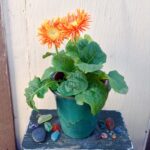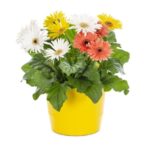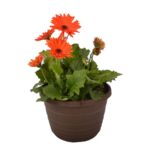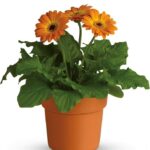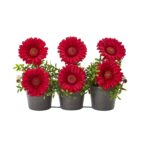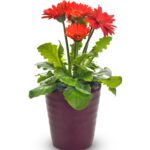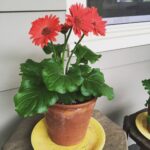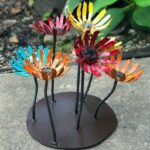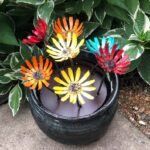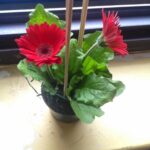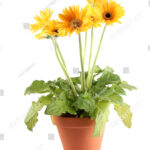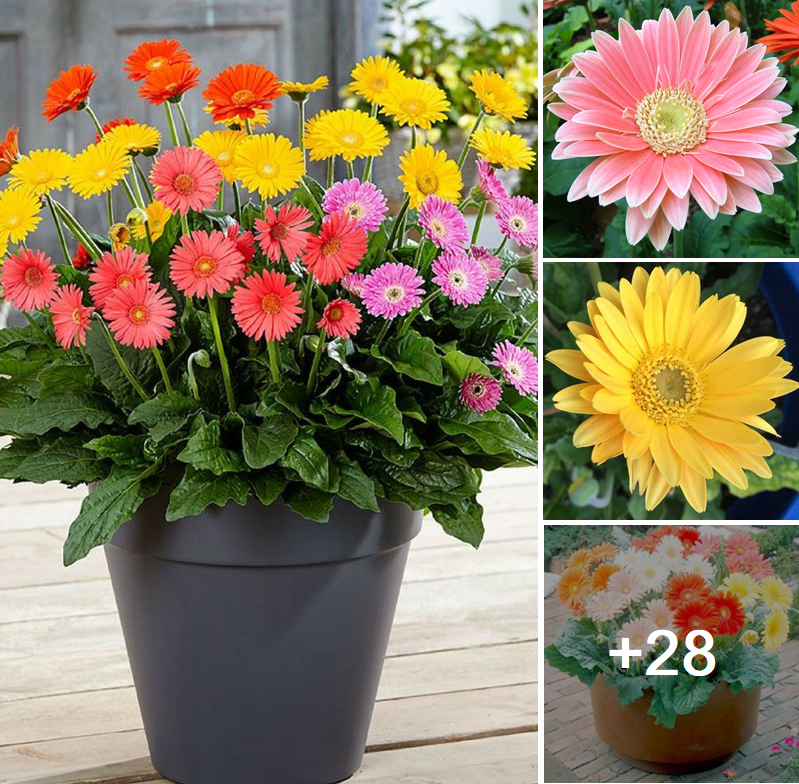
The Gerbera daisy (Gerbera jamesonii), sometimes called Gerber daisy, is a type of daisy-like flower within the Asteraceae family, also known as the daisy or aster family. Native to South Africa, Gerbera daisies have showy flowers in various bright colors including orange, red, pink, yellow, and white, with yellow, green, or black centers. Gerbera daisies are prized because the blooms can grow quite large—up to five inches. There are many cultivars in four flower appearances: single flowers, semi-double flowers, double flowers, and spider flowers.
How to Plant and Grow Gerbera Daisies
You can buy sprouted Gerbera daisies at a garden center or grow the daisies from seeds.
1. Plant Gerbera daisy seeds indoors before the last frost. Gerbera daisies are not frost-hardy and need warmth to germinate. To ensure a summer bloom time, plant the seeds indoors 12 to 18 weeks before the last frost.
2. Use a potting mix soil. Press the seeds on top of well-draining soil, but don’t bury the seeds because they need light to germinate. You can add a propagation mix to the soil to encourage germination, which will take two to four weeks. To plant sprouted daisies outdoors, add mulch to the surface of the ground around the plants to prevent weed growth. If the soil isn’t draining well, add some peat, perlite, or a sandy soil mixture.
3. Make sure Gerbera daisies get direct sunlight. Place the seeds in a spot that gets plenty of indirect sunlight. When transplanting established plants outside, choose a location that gets full sun. In more Southern climates, make sure the plants get afternoon shade to prevent burning.
4. Let the soil dry between waterings. Keep the soil moist until germination. Water established plants when the top inch of soil is dry—about an inch of water a week during the growing season. During the winter, water once a month. Soil that is too wet can lead to fungal disease, powdery mildew, or root rot, so water the plant close to the ground to prevent crown rot.
5. Plant sprouted daisies 12 to 18 inches apart. Once the seeds have germinated, transplant the seedlings outdoors in early spring. Plant the seeds in peat or paper pots directly in the ground to avoid disturbing the roots, and ensure that the crown of the plant (the area where the stem and roots meet) is slightly above the soil level.
3 Gerbera Daisy Care Tips
Gerbera daisies grow best in warmer climates, where they can be grown as perennials. In places with heavy frost, they are typically grown as annuals or brought indoors during the winter. With proper care, Gerbera daisies can bloom into the fall.
Fertilize to encourage growth. Give the Gerbera daisy a feeding of water-soluble fertilizer during the growing season.
Deadhead the flowers to extend bloom time. Deadhead spent blooms by cutting the stem down to the next bud or leaf to encourage more flowers and leaf growth.
Protect your Gerbera daisies from pests. Aphids, whiteflies, and leaf miners are common pests for Gerbera daisies. Get rid of pests using neem oil and cut off any affected leaves. Pests usually target stressed plants, so make sure that the Gerbera daisies are not sitting in water.





